"You don't have many people who see a product and opportunities, and take action. You also have to stick your neck out and Ron has done that," Bram Verschoor of Lowpad tells us. He is talking to Ron Fransen of Celdomy, which specializes in the smart distribution of fresh (cut) flowers, plants, and accessories to French florists.
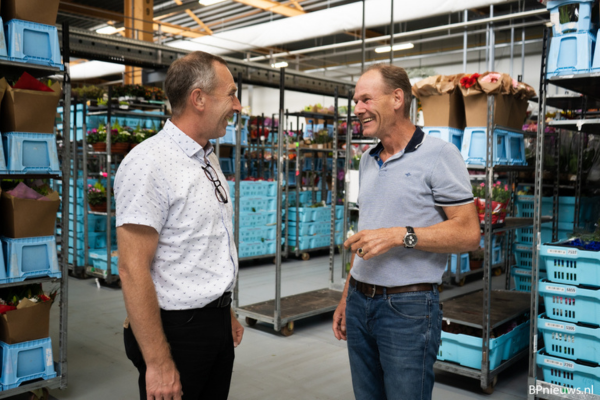
Bram Verschoor and Ron Fransen
It took a lot of time, space, and some chaos, but anyone who now steps into Celdomy's hall will see a lot of robots driving around, making work a lot easier for Ron and the other employees within the company. The company was facing a major challenge due to a shortage of workers and rising labor costs. To still keep logistics running as smoothly as possible, 65 Lowpads were commissioned to efficiently guide the Danish CC carts through the building.
Implementation
Ron says: "As with all logistics changes, it is a process with a lot involved, but also a lot gained." Bram: "With projects like this one, you see how important it is to work well together and interact. That is sometimes difficult because it takes time to get everything running and perform."
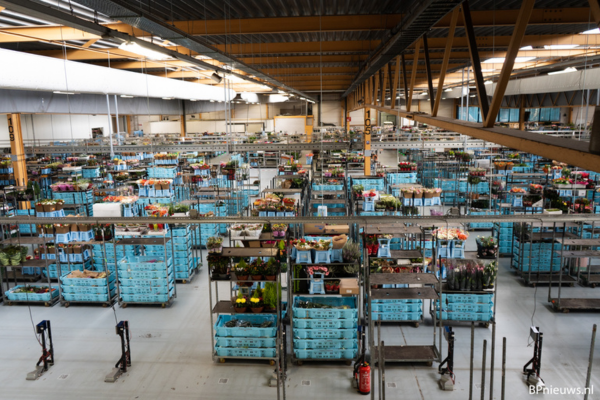
"In the past, we had a conveyor belt system, but space had to be created for the Lowpads. Pieces of the old system were taken away, but everything was done in stages. Ron: "We had once thought of needing fewer people, but in the beginning, we needed a bit more people. You have the old system which is still running and which is kept running by employees, as well as the new system which is also already in use. We are happy that we had a very good implementation, but the intervening period was sometimes grueling."
Bram: "In the beginning, there are still bugs and the software has to be adjusted here and there, but you jump right in at such moments to solve it. The work is now done with a smile and we have already passed the target. People from all over the industry open-mouthed watched what happens here. The results are even better than the plan was when we started implementation 1.5 years ago."
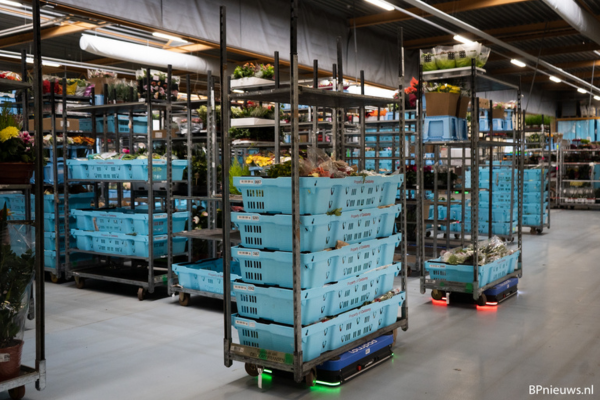
Pick station
To make the logistics process faster and smoother, Lowpads drive around get the right carts to the right pick station. At the pick station, there is an employee who can load all the flowers and plants from an order onto the right cart. The process starts as follows: When a shop places an order at Celdomy a blueprint is made of what the cart will look like. The cart is then arranged with the right number of plates or crates.
In the meantime, Ron has also been developing the crates. Ron says: "So much cardboard is used in our sector, but I wanted a more sustainable alternative. I have now developed crates that fit in the carts and are stacked together after use. As a result, it takes up no more space than sheets of boxes and it presents nicely. This has made the picking process even easier."
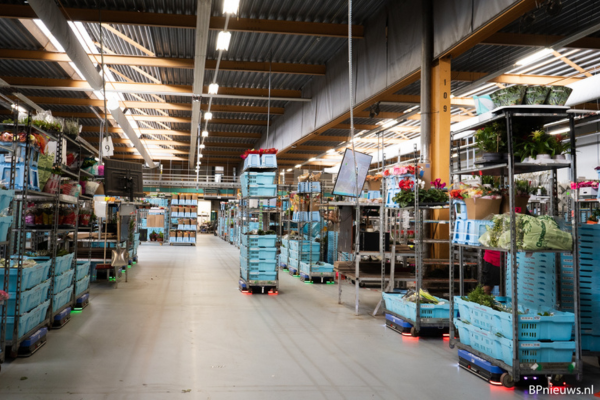
He continues, "Multiple products are picked from one station. Since everything is pre-arranged and arranged in order, a cart is filled in no time. We actively steer for as little back-and-forth traffic on the shop floor as possible. We now easily achieve a picking time of 21 seconds, which is quite special because flowers are difficult products with no fixed dimensions. We achieve 160 to 170 order lines per hour."
Smart robot
And then those Lowpads. Six years ago was the beginning of the smart robot, of which there are four different models. Bram says of the Lowpad: "Here is model M, which was developed very specifically for the Danish container and is meant to support flower and plant exports. They take on transport, picking and processing, and work well with people. That's what a Lowpad is meant for. It's quite an investment for a company, but this can be earned back within five to six years. The Lowpad is controlled by software that we can modify and rewrite as needed. Other than that, pretty little is needed to make the system work, except the space to drive them around and charging stations where they can recharge. So if a company ever moves, or wants to double up, it's just a matter of moving everything or adding more Lowpads."
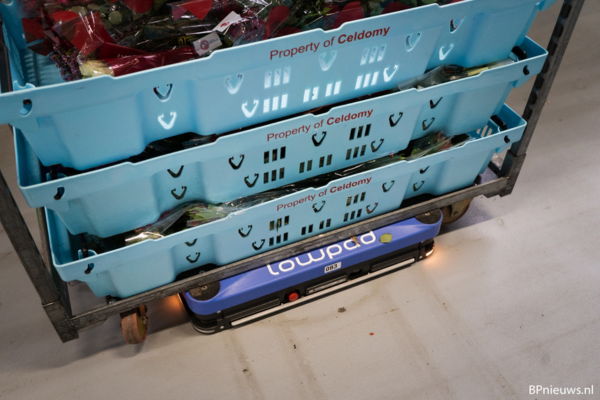
3D scanner
"It takes only five minutes to update the Lowpad via the cloud. The software is generic and is configured for each customer. In this way we can even provide services after a long time with little effort. These days, we scan a space with a 3D scanner so that a business is running before the Lowpad is even there to tackle problems in advance."
Ron and Bram are still happy with the leap of faith they took a few years ago. "And who knows, maybe in a while more robots will be driving around."
For more information:
Ron Fransen 
Celdomy
[email protected]
www.celdomy.nl
Bram Verschoor 
Lowpad
[email protected]
www.lowpad.com










